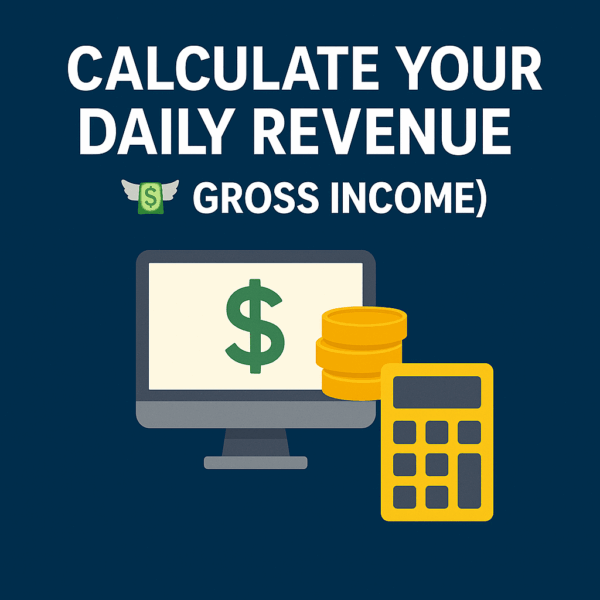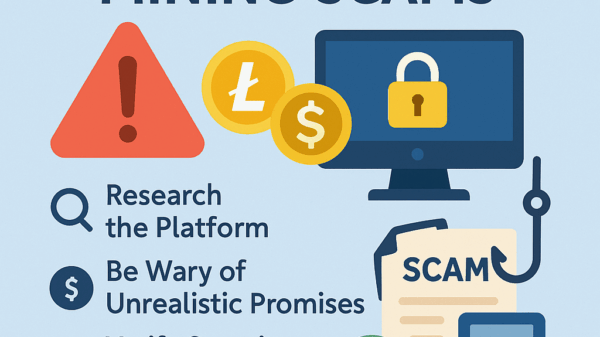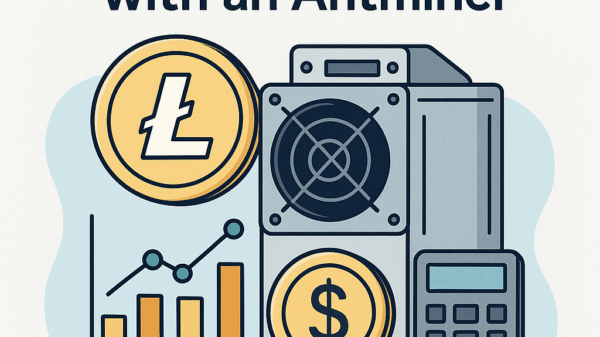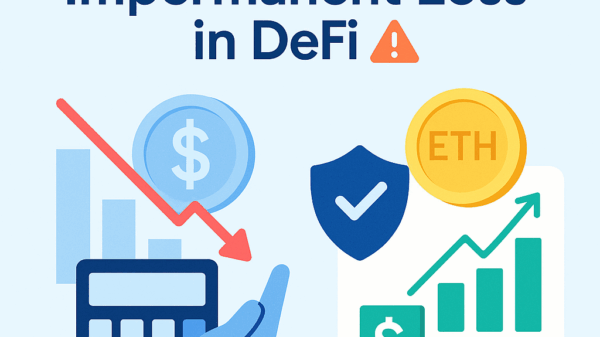How to Calculate Mining Profitability
By Jason Miller – Crypto Writer 10.expert 🧠 Covering Bitcoin, altcoins, blockchain & Web3.
As a crypto writer and analyst, I often say that mining cryptocurrency isn’t just about plugging in a machine and watching the digital coins roll in. It’s a highly competitive, dynamic, and intricate industry where profitability is king. Without a clear understanding of how to calculate your potential earnings and expenses, you’re essentially operating blind, hoping for the best.
In 2025, with Bitcoin’s halving behind us and various altcoin networks seeing increased competition from both GPUs and ASICs, calculating mining profitability is more crucial than ever. It’s not a static number; it’s a constantly moving target influenced by a multitude of factors.
Let’s break down how to effectively calculate your mining profitability to ensure your operation is a sustainable venture, not just a costly hobby.
How to Calculate Mining Profitability: Your Essential Guide to Sustainable Earning 💰📈
Understanding the economics of crypto mining is paramount. This isn’t just about revenue; it’s about net profit after all expenses.
Identify Your Miner’s Key Specifications ⚙️
The starting point is your mining hardware’s performance metrics:
* Hashrate: The processing power of your miner (e.g., 200 TH/s for a Bitcoin ASIC, 1 GH/s for a Kaspa ASIC, 100 MH/s for an Ethash GPU). This is your “production” capability.
* Power Consumption (Watts): How much electricity your miner uses. This is your primary ongoing cost. (e.g., 3500 Watts for a Bitcoin ASIC, 300 Watts for a GPU).
Know Your Electricity Cost ⚡
This is often the single most critical factor determining profitability.
* Rate per kWh: Find your precise electricity rate, including all taxes, surcharges, and tiered pricing (e.g., $0.08 per kWh).
* Fixed vs. Variable: Be aware if your rate changes based on time of day (peak/off-peak) or consumption volume.
Understand the Cryptocurrency’s Network Metrics 🌐
These are external factors you don’t control, but they heavily influence your earnings:
* Current Price: The market value of the cryptocurrency you are mining (e.g., BTC at ~$107,289, KAS at ~$0.078, LTC at ~$86.41, DOGE at ~$0.16, ETC at ~$16.24, CKB at ~$0.0034, ZEC at ~$39.11 – all prices are approximate as of June 29, 2025).
* Network Difficulty: A measure of how difficult it is to find a new block. It adjusts regularly to keep block times consistent. As more miners join, difficulty increases, reducing individual miner’s share of rewards.
* Block Reward: The amount of cryptocurrency rewarded to the miner who successfully finds a new block (e.g., 3.125 BTC per block for Bitcoin after the April 2024 halving).
* Average Block Time: How often new blocks are found on the network (e.g., ~10 minutes for Bitcoin, ~1 second for Kaspa).
* Transaction Fees: Miners also earn a portion of the transaction fees included in each block. This can be a significant part of the revenue, especially for Bitcoin during network congestion.
Calculate Your Daily Revenue (Gross Income) 💵

This involves estimating how much crypto you will mine and its fiat value.
* Your Share of Network Hashrate: Calculate your miner’s hashrate as a percentage of the total network hashrate. This determines your theoretical share of block rewards.
* Estimated Coins Mined Per Day: (Your Hashrate / Network Hashrate) * (Daily Block Rewards). Daily Block Rewards are calculated as (24 hours * 60 minutes / Average Block Time in minutes) * Block Reward per block.
* Daily Revenue in Fiat: Estimated Coins Mined Per Day * Current Cryptocurrency Price.
Calculate Your Daily Electricity Cost 💡
This is straightforward:
* Daily Electricity Cost = (Miner’s Power Consumption in Watts / 1000) * 24 hours * Electricity Cost per kWh.
Account for Mining Pool Fees 🤝
If you’re part of a mining pool (highly recommended for most home miners), they take a percentage of your earnings.
* Pool Fee Percentage: Typically 0.5% to 3%.
* Net Daily Revenue = Daily Revenue * (1 – Pool Fee Percentage).
Consider Other Potential Costs (Often Overlooked) 💲
- Hardware Cost (CAPEX) & Depreciation: The initial purchase price of the miner. This is a one-time cost, but you should factor in how long it will take to “pay off” the miner (ROI) and its depreciation over time.
- Shipping & Import Duties: Don’t forget these when buying hardware.
- Setup Costs: Wiring upgrades, ventilation systems, cooling solutions, racks.
- Maintenance & Repairs: Fans, power supplies, potential repairs.
- Internet Costs: A stable internet connection is essential.
- Software Fees: If you use a mining OS like HiveOS, there might be a small per-rig fee.
- Withdrawal/Exchange Fees: When moving your mined crypto from the pool to your wallet, and then to an exchange for sale.
- Taxes: Mining income is generally taxable. Consult a tax professional in your jurisdiction.
Calculate Your Daily Net Profit 🤑
Daily Net Profit = Net Daily Revenue (after pool fees) - Daily Electricity Cost - Other Dailyized Costs.
- To “dailyize” upfront costs, you might divide the initial hardware cost by your target ROI period (e.g., 365 days for one year).
Utilize Online Mining Profitability Calculators 📊
While understanding the underlying formula is important, using a reliable online calculator is the most practical way to assess profitability in real-time.
* Popular Calculators: WhatToMine.com, NiceHash.com/profitability-calculator, Minerstat.com.
* Inputs: You’ll typically input your hashrate, power consumption, electricity cost, and select the cryptocurrency.
* Outputs: They provide estimated daily/monthly/yearly revenue, electricity costs, and net profit. They also show which coins are currently most profitable for your hardware.
The Volatility Factor: A Dynamic Equation 🎢
Mining profitability is not static. It’s constantly affected by:
* Cryptocurrency Price Fluctuations: A sudden drop in coin price can turn a profitable operation into a loss-making one overnight.
* Network Difficulty Adjustments: As more miners join or more powerful hardware comes online, difficulty rises, reducing your share of rewards.
* Halving Events: For coins like Bitcoin, programmed halving events drastically cut block rewards, requiring miners to be much more efficient or rely on a price increase. (Bitcoin’s last halving was April 2024, reducing rewards to 3.125 BTC).
Future-Proofing Your Calculations 🔮
When considering a mining investment, don’t just use current numbers.
* Project Difficulty: Assume network difficulty will generally increase over time.
* Price Scenarios: Model your profitability with different cryptocurrency price scenarios (bearish, neutral, bullish).
* Hardware Obsolescence: Factor in that newer, more efficient miners will be released, potentially making your hardware less competitive over time.
Consider “Payback Period” (ROI) ⏱️
Calculate how long it will take to recoup your initial hardware investment.
* Payback Period = Total Hardware Cost / Daily Net Profit.
* A shorter payback period is less risky.
Don’t Forget the Opportunity Cost 💭
Could the money spent on mining hardware and electricity be better invested elsewhere (e.g., directly buying the crypto, traditional investments)? This is a personal decision, but worth considering.
Monitoring is Key: Re-evaluate Regularly 👀
Profitability is a moving target. Regularly (daily/weekly) check:
* Your miner’s actual hashrate.
* Your electricity bill.
* The coin’s price.
* Network difficulty.
Adjust your expectations and potentially your strategy (e.g., switch coins if your hardware supports others, consider selling if it’s no longer viable).
It’s a Business, Treat it Like One 📈
Successful mining is a business. It requires meticulous accounting, strategic planning, risk management, and continuous adaptation to market forces. Don’t let emotion or hype dictate your decisions.
By diligently calculating and continuously monitoring these factors, you can make informed decisions that pave the way for a more profitable and sustainable cryptocurrency mining operation.








